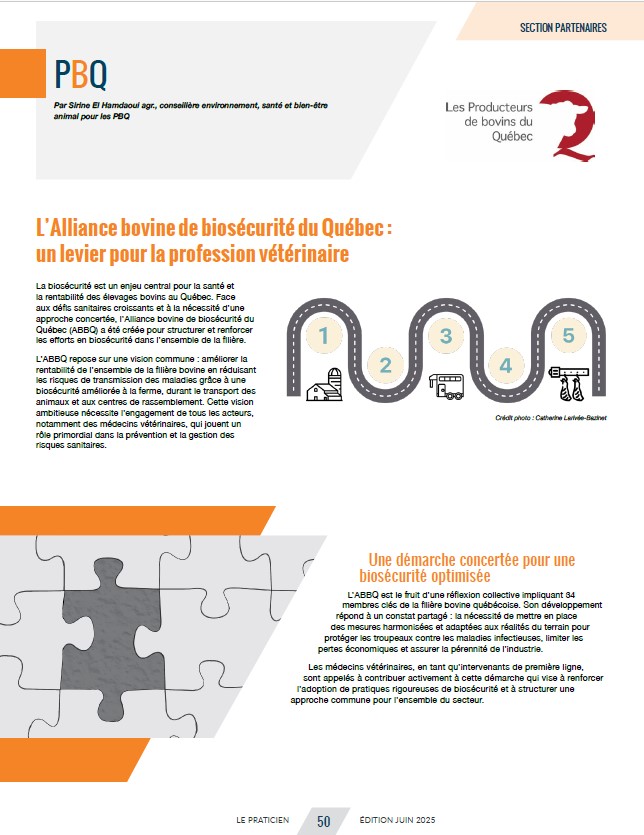Animal health and biosecurity
Certification and animal health
The VBP+ and CRSB certification programs promote engagement in sustainability and animal health. The VBP+ program is a way for producers to show that they are using best practices on their farms.
Rapid detection of changes in animal health and appropriate intervention are required. Veterinarians help producers through the necessary steps. This reflects the requirements of both the VBP+ and the CRSB programs.
Click the logos to learn all about the VBP+ and CRSB certification programs.
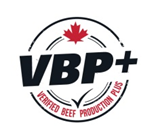 |
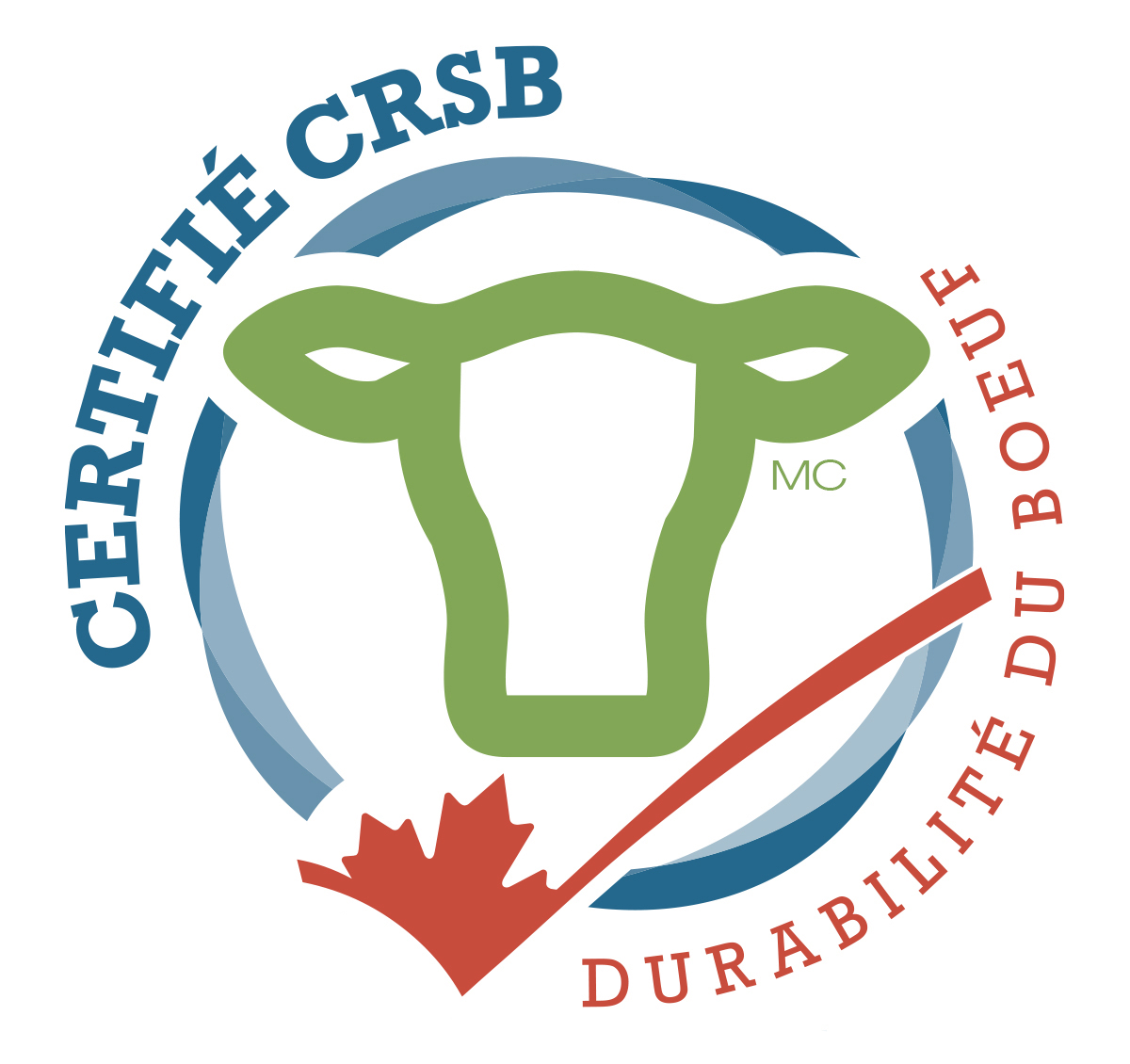 |
Antibiotic resistance
Antibiotic resistance is the ability of bacteria to survive antibiotics and other antimicrobials. While various factors are at play in this issue, it is the excessive or inappropriate use of antibiotics that raises major concerns worldwide.
By some estimates, antibiotic resistance may overtake cancer as the leading cause of death worldwide by 2050. The economic impact is also worrisome: it could cost the Canadian healthcare system $6 billion to $8 billion per year.
Keeping the rise in antibiotic resistance in check is the business of everyone who uses antibiotics. Whether we use these precious drugs for human medicine, pets, or livestock production, we all need to rethink how they get used.
In Quebec, the Ministère de l’Agriculture, des Pêcheries et de l’Alimentation du Québec (MAPAQ) has implemented a system for monitoring antibiotic use in livestock production. This system makes it possible to monitor changes in practices and identify solutions to slow the emergence of antibiotic resistance cases.
Each year, the Programme québécois d’antibiosurveillance vétérinaire (Quebec veterinary antibiotic monitoring program) publishes data on antibiotic use in cattle production. The results can be viewed on the MAPAQ website.
Biosecurity
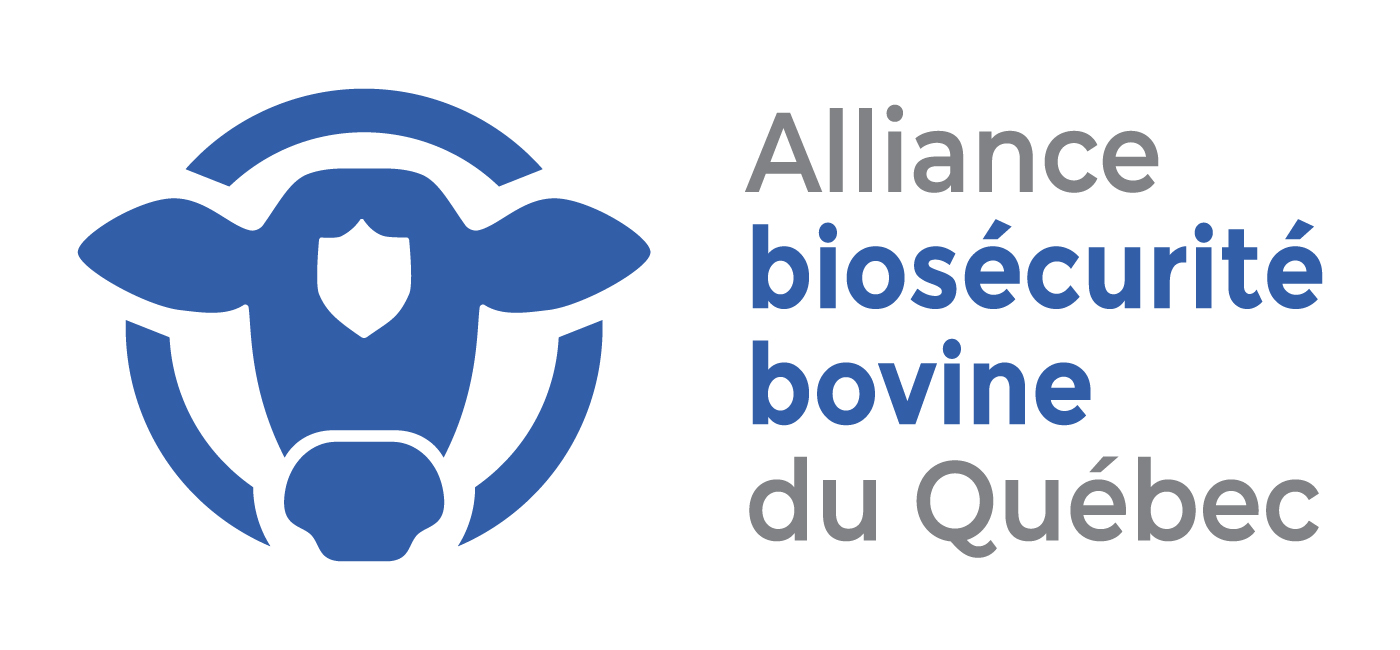
What is biosecurity?
Biosecurity refers to the actions producers take to protect their animals and loved ones from harm—and to prevent diseases from being introduced and propagating, both on individual farms and between farms. Whether they be small-scale gestures or large-scale efforts, biosecurity measures are part of the One Health approach, which recognizes the interdependence of human, animal, and plant health.
Biosecurity initiatives
The PBQ has engaged in various efforts in recent years to better document biosecurity-related issues on farms, at auctions, and in transport. These include the following:
- On-farm biosecurity response plan and veterinary consulting for milk-fed veal
- Clarifying and ranking the risks of Salmonella Dublin propagation in cattle marketing
- Improving biosecurity in transport
- Updating biosecurity practices at Quebec cull cattle and dairy calf auctions
What is the ABBQ?
The Alliance biosécurité bovine du Québec (ABBQ) is the outcome of two years of collaboration between producers, stakeholders, researchers, and organizations. It aims to improve health security throughout the sector and make it more resilient and future-ready in the face of mounting challenges in animal health and welfare.
In the cattle sector, animals are frequently moved between farms, auctions, and abattoirs. This involves serious health-related risks. Even one contagious disease can have major repercussions: financial losses, lower productivity, animal welfare impacts, stress for producers, and reputational damage to Quebec’s industry in the different markets.
This page features all the products and tools the ABBQ has released to date.
The ABBQ aims to be a unifying body, and some of its work will focus on developing this aspect. Since communication is the key to success in this endeavour, the ABBQ will dedicate much of its energy to disseminating information.
ABBQ action plan
5-year action plan (2025–2029)
4 objectives et 12 actions
| Objective 1 : Obtaining buy-in from stakeholders in support of the strategy |
|
| 1 | Raise stakeholder awareness about the importance of biosecurity to animal health des animaux |
| 2 | Support stakeholders who wish to implement actions |
| 3 | Hold discussions within the sector to reduce the risk of disease transmission in cattle marketing |
| Objective 2 : Promoting the adoption of best biosecurity practices |
|
| 4 | Develop biosecurity training for all players ; |
| 5 | Transfer knowledge regarding best biosecurity practices |
| 6 | Develop a biosecurity risk assessment questionnaire that may include personalized action plan |
| 7 | Encourage disease screening based on the results of the risk assessment questionnaire and/or the farm’s needs |
| Objective 3 : Improving biosecurity at the facility design stage |
|
| 8 | Improve access points at auctions to limit disease transmission |
| 9 | Encourage the construction of loading/unloading zones and other measures to minimize the risk of disease transmission |
| 10 | Incorporate biosecurity into building design |
| Objective 4 : Improving communication within the cattle sector |
|
| 11 | Create a system for communicating with all stakeholders |
| 12 | Develop distinctive visuals for communications |
Emergency response plan
In a context of heightened risk for pandemics and epizootic diseases, it is critical that the cattle sector be prepared for emergencies. That’s why the PBQ and the Producteurs de lait du Québec have pooled their efforts to develop a joint emergency response plan.
Why have an emergency response plan?
The purpose of the plan is to ensure there is an effective structure already in place for coordinating between the different chain links in the cattle sector in the event of a crisis. This could include an outbreak of exotic animal disease such as foot and mouth disease. The objective of the plan is twofold:
- To mitigate the economic, social, and commercial impacts of such a crisis
- To ensure a rapid and coordinated response using collective expertise and well-defined roles
By taking these measures preventatively, the sector puts itself in a better position to protect herd health, the future of farm businesses, and market access.
For more information on the emergency response plan and details on the responsibilities of the different stakeholders, see the document below.
PISAQ
Quebec authorities have developed the Programme intégré de santé animale du Québec (PISAQ, or Quebec integrated animal health program). The aim of the PISAQ is to build farmers’ capacity to sustainably mitigate the collective impacts of animal health and welfare issues as they pertain to herd health, public health, and business productivity. Please see the MAPAQ website for more information. Producers can also ask their veterinarian or contact the MAPAQ at pisaq@mapaq.gouv.qc.ca if they have any questions.
 Youtube
Youtube Facebook
Facebook